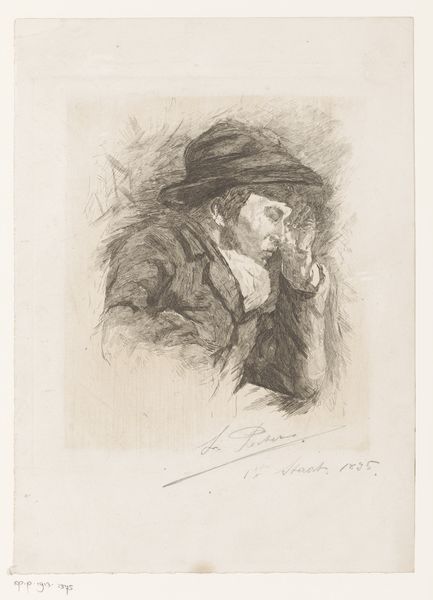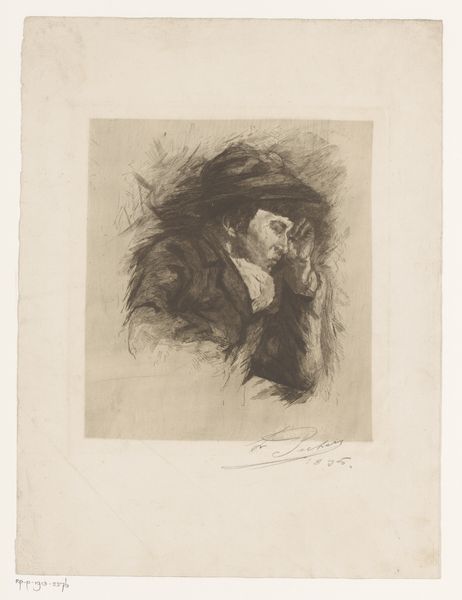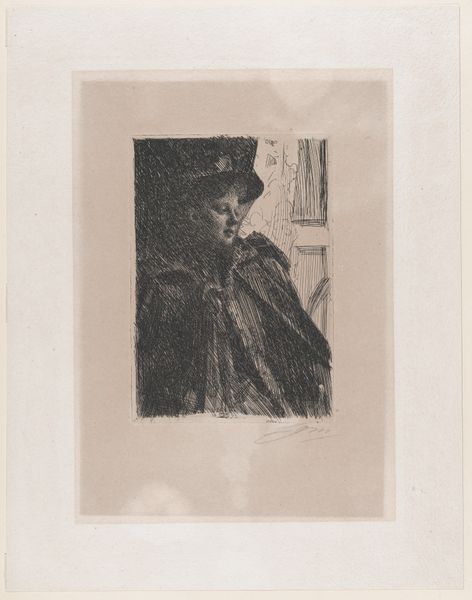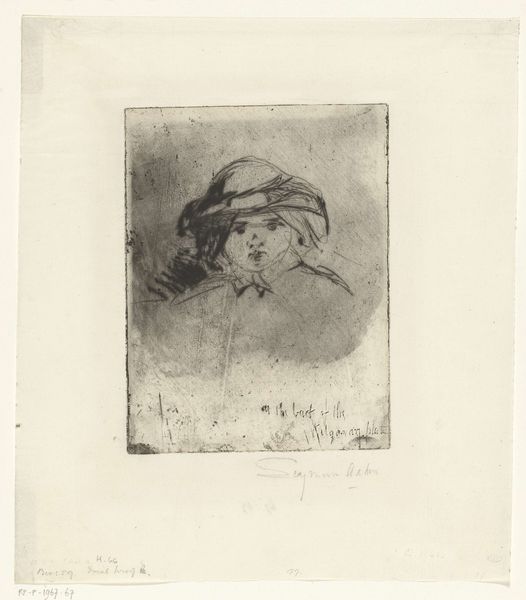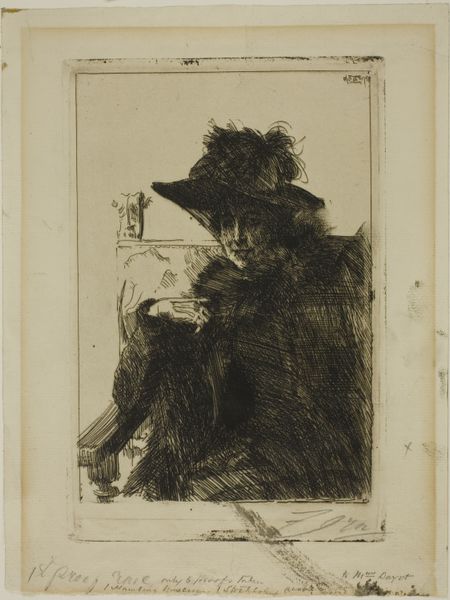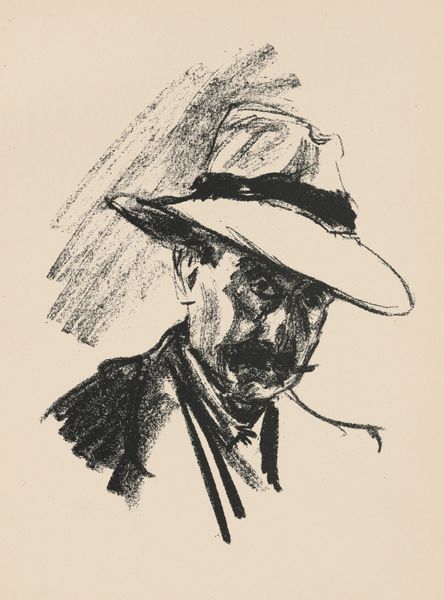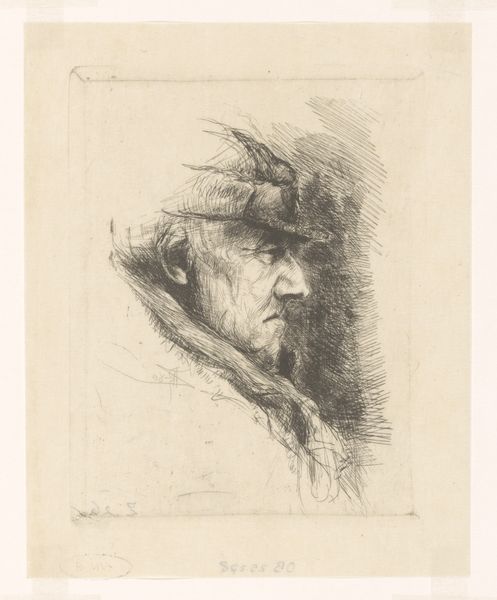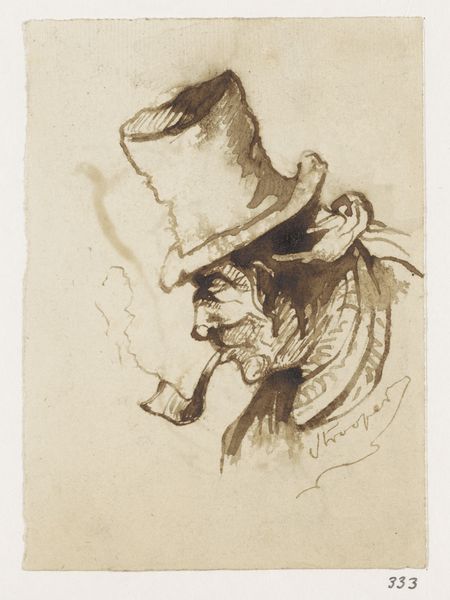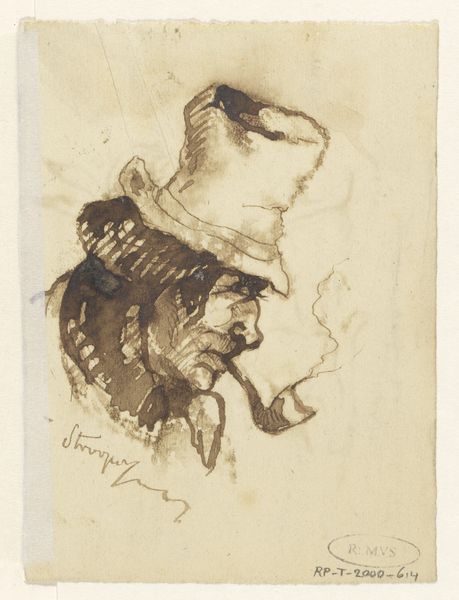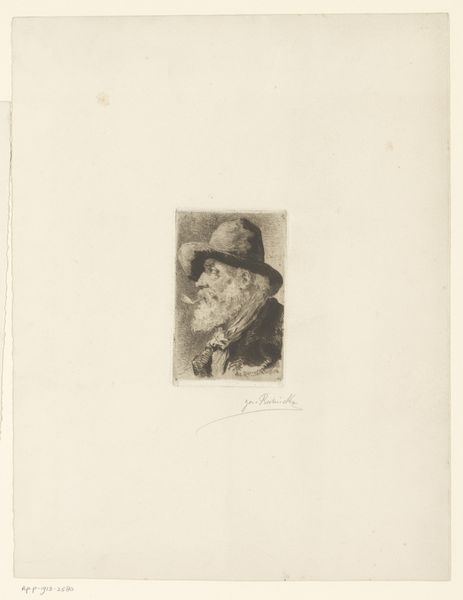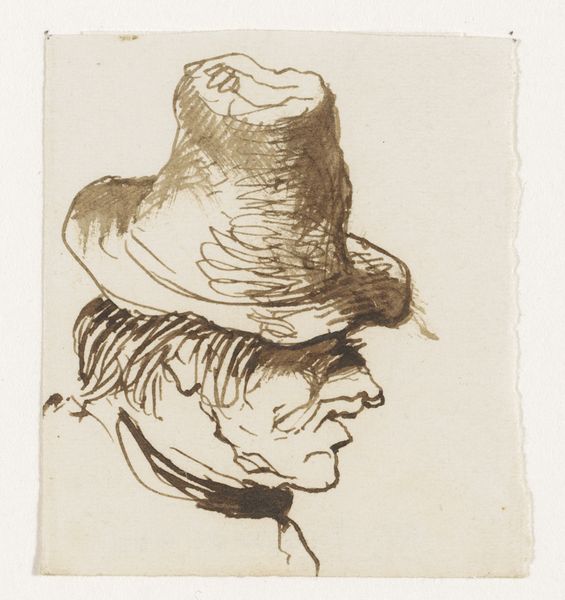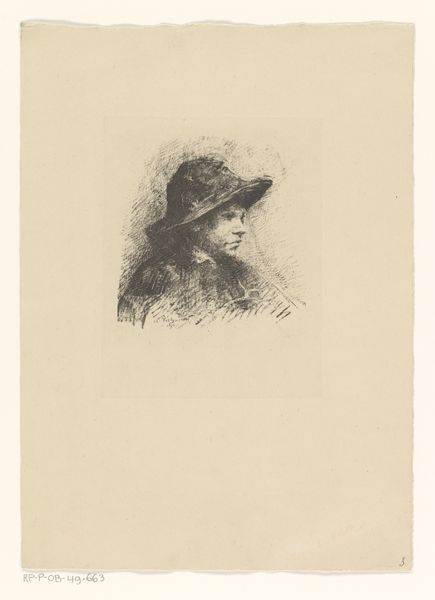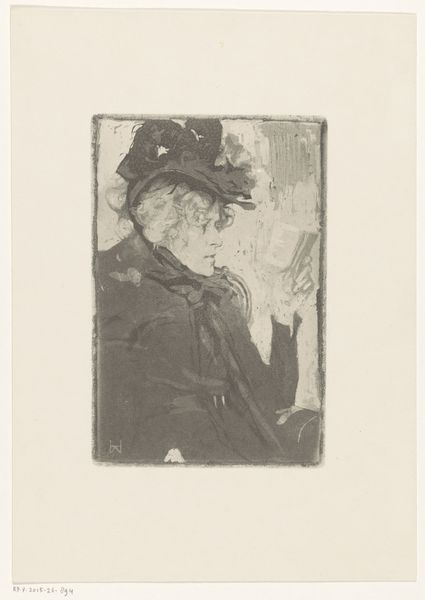
drawing, print, etching, paper
#
portrait
#
drawing
# print
#
etching
#
paper
#
realism
Dimensions: 228 × 185 mm (plate); 339 × 241 mm (sheet)
Copyright: Public Domain
Curator: "The Smoker," an etching rendered on paper by Wilhelm Leibl between 1873 and 1874. It’s part of the collection here at the Art Institute of Chicago. Editor: The heavy use of dark ink and the figure's faraway gaze give this piece an introspective and almost melancholic mood, don’t you think? Curator: Definitely. I’m struck by the incredible detail he achieved with etching – the subtle gradations in tone. Consider the hat: a thick felt object. What kind of social statements do these fashion statements make in terms of class, profession and leisure during that time? Editor: Good question. During that time, these kinds of artistic portrayals really started democratizing art. Looking at art from that era gives the public insights into different social classes, allowing viewers to engage with the realities of everyday life, a departure from the glorification of historical figures or royalty. The art institution begins shaping public consciousness and fostering broader societal discourse. Curator: And what about the means of production here? This print allowed for wider circulation compared to a unique painting. Leibl could engage a much larger audience, but how did this affect the perceived value of the image? Did it become a mass-produced commodity or was each print still regarded as a unique, valuable artwork? Editor: I imagine the ability to distribute his work more widely was indeed revolutionary for Leibl as it began to challenge traditional art market structures that relied on wealthy patrons. Consider, how the rising middle class had newfound accessibility to art and cultivated tastes that would further shape artistic trends and social norms in the long run. Curator: You're right. Seeing it displayed here, removed from that initial context of its making, how does that affect its power to challenge or inform? How is art now viewed? Is it still political in nature, or aesthetic, or monetary? Editor: Those questions highlight a tension inherent to art institutions: they are a platform for democratic viewing, and a location for financial appreciation, as well as offering political opportunities and discussions that continue to this day. We are responsible to give those layers to audiences as the context enriches the appreciation. Curator: Precisely. It prompts a reflection on how we engage with historical pieces—both acknowledging their artistic ingenuity, their tangible materials, and considering their evolving societal implications. Editor: Agreed. This contemplation enhances our interaction and dialogue with each work.
Comments
No comments
Be the first to comment and join the conversation on the ultimate creative platform.
